Definition of Art
We’re visiting the dictionary in this post, my friend.
Painting, Printmaking and Drawing are all bound to creativity and expression. One of the definitions of art is ‘the conscious use of skill and creative imagination – especially in the production of aesthetic objects‘.
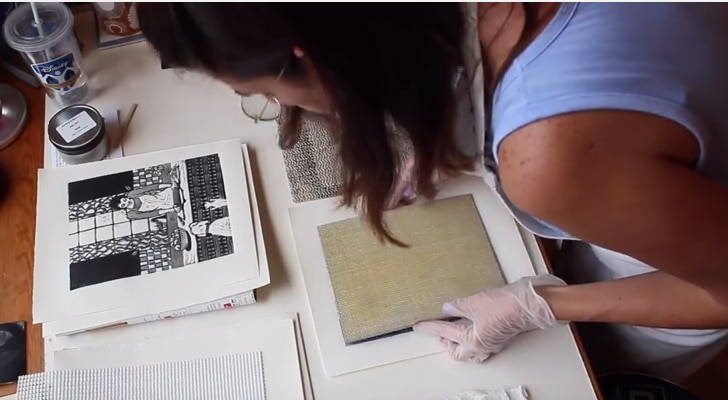
Art-Making Intention
Let’s break that down a little… The first part – the conscious use of skill – is related to intention – building something. That time when we are making, scribbling, painting, sketching, layering pigments, etc.
I love the phrase the conscious use of... This part is active; when we are using, and experimenting with art supplies in our hands.
It’s a simple description of our favorite art making time. And building the skill part of the definition requires using the tools, and repetition, right? It’s all linked together.
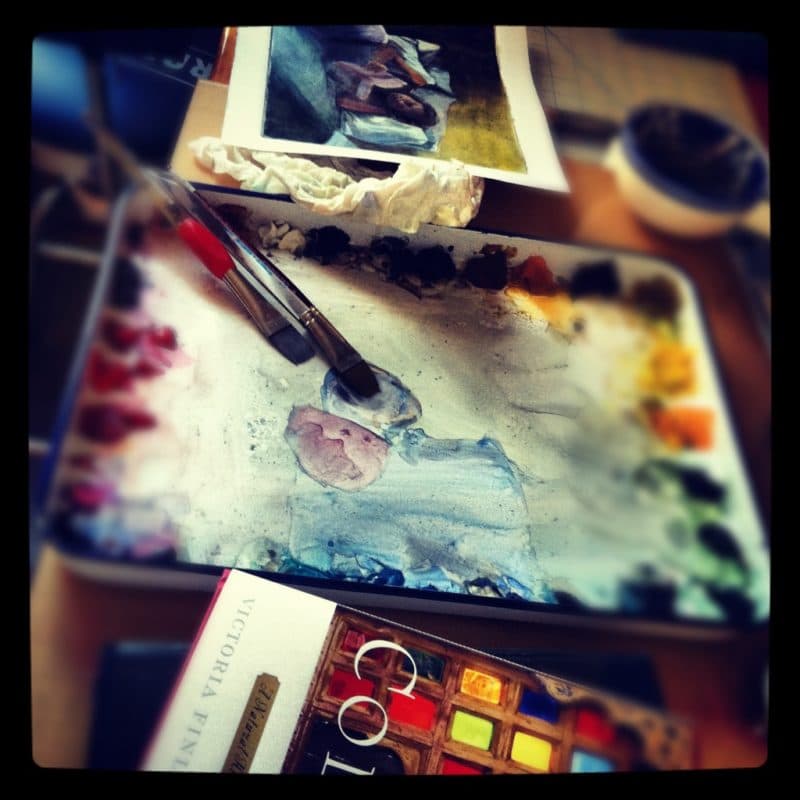
What is Imagination?
The second phrase in the definition of art – the conscious use of creative imagination – is the noticing and idea generation in creativity.
Creating is probably the most personal component for artists, because it happens in your head first. You don’t need tools, or a “skill” for imagination – you simply have to Think. I like to think about art. And I bet you do too, right?
Imagination is a beautiful lake, fed via rivers and tributaries of influence. Your personal history and life experiences feed that lake. Imagination is marinated in memory, emotions, passions and longing.
Looking at other artist’s work is a big source of inspiration for my imagination. Reading about an artist’s mindset, or their history, in the form of letters, methods and career stories is also very inspiring.
Feed Your Imagination
Science insists that going for a walk does wonders for creative imagination (read about the study here). Music helps add to imagination.
Or you can listen to art-related podcasts, or experiment with art supplies, or take an art workshop online.
Have you considered a ‘meet and make’ with other artists so you can talk about art, and watch another artist work?
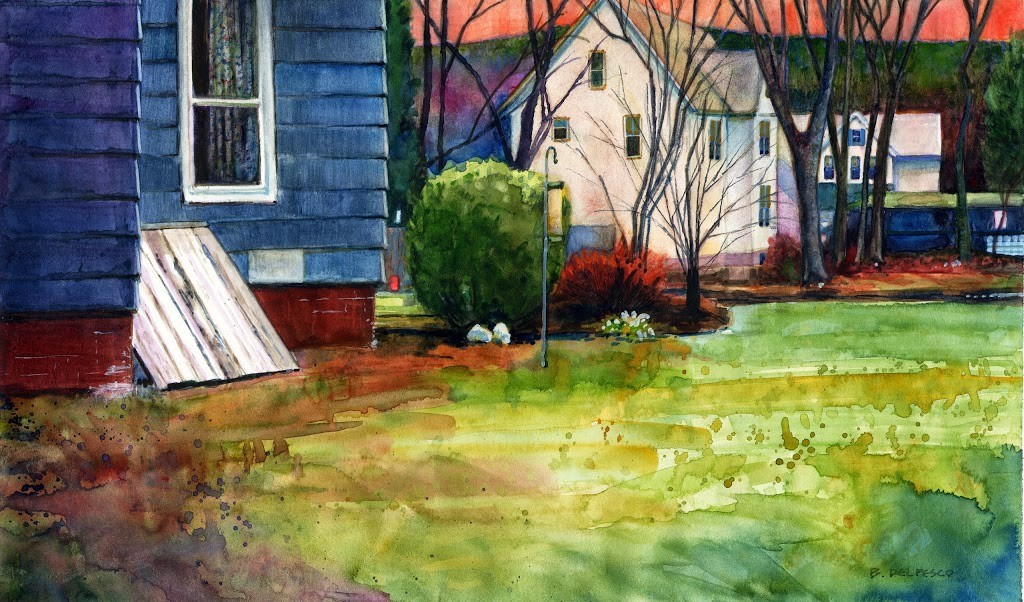
Practicing Your Art
Art is usually created when we’re alone.
This part of the skill-building sequence is often challenging for beginner artists. It certainly was for me.
Making art on a regular basis get’s tripped by fear, time-restraints, the need for guidance, or supplies, etc. Lucky for us, there are resources online for some of those challenges.
The trick is, you have to actively reach out for help to jump those art-blocking hurdles.
Analysis Paralysis is real. I used to ponder and fret over how to start every single painting.
Now, I begin watercolor paintings like construction projects. A grid drawing first, just like a blueprint to a house, working on each drawing in mini sessions. I grout art-time in between the hard tile of life-obligations.
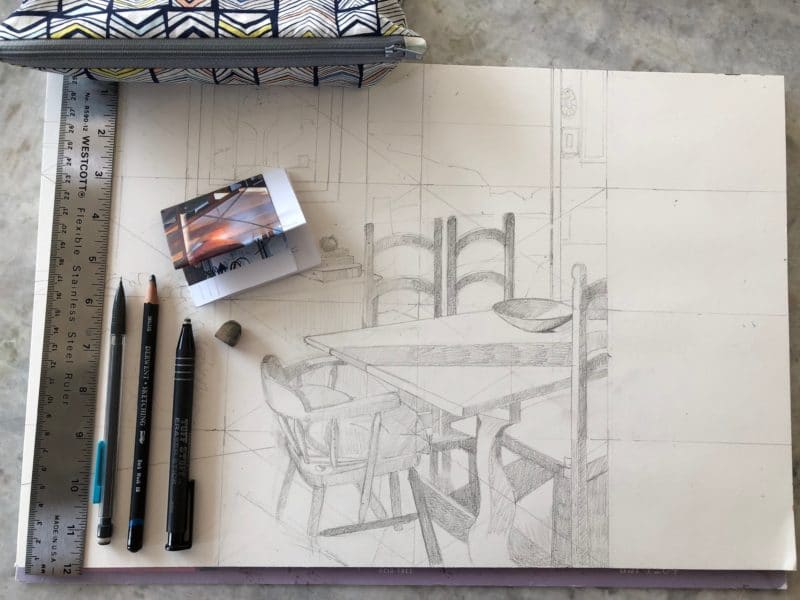
That supplies me with lots of drawings, ready to paint, and regular drawing practice.
Artistic Expression
We often see the word “expression” in the definitions of art too. Expression is defined as ‘the process of making known one’s thoughts or feelings’. You are expressing on paper and canvas, or carving into a block, or sketching.
If you’ve been spending a lot of time in your own head, pondering worldly things during a pandemic, it feels nice to open the spigot and work with your hands.
When you’ve been immersed in consuming – via social media, news broadcasts or reading other people’s words – its a rejuvenating break to replace consuming with creating. The direction of flow is the opposite of consuming, when we create. We pour out of ourselves with art.
The next sequence in the definition of art is sharing one’s work – making it known to others.
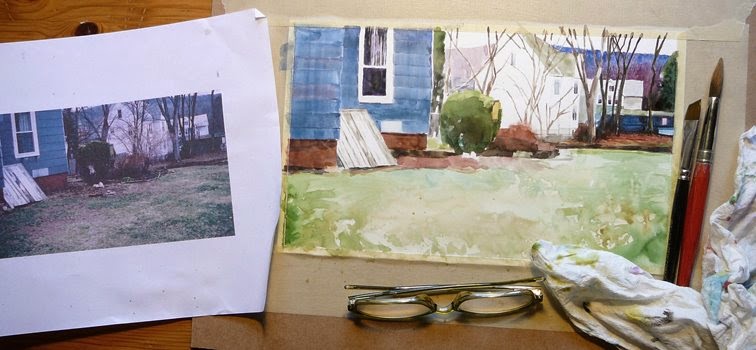
Grown Up Artists
Sharing your work balances the alone-time at the art table. When a 4 year old finishes a crayon drawing, they barely finish before holding it up to announce “Look what I made!”.
When an adult finishes a drawing, they often stuff it in a self-loathing drawer, and hide the results of their efforts with a groan – evidence of a grown up judgement.
Let your four year old self out of the dungeon, and share your work. Pick an audience that’s encouraging.
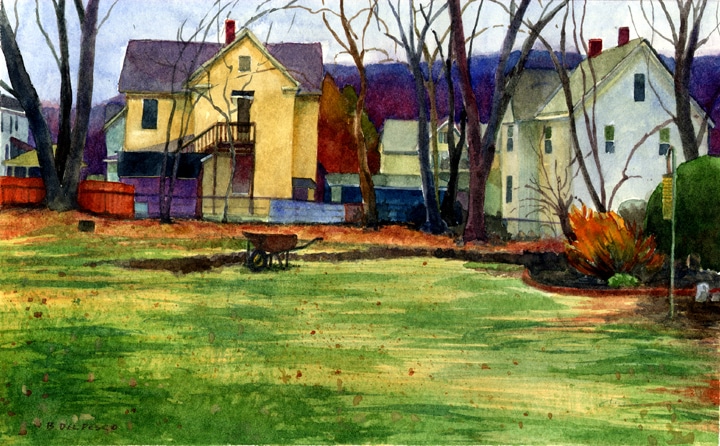
Make More Art with Encouragement
Take the encouragement from your friends and family *in*.
Don’t crush their compliments underfoot with a boot cobbled with everything you hate about the art you made.
It’s easier to remove an old habit (negative self talk) by replacing it with a healthier alternative that occupies the empty space where the bad habit used to live.
Learn to take encouragement in. Set your mind to feeding your learning self with more encouragement to stay with your efforts. Remind your naysayer that you’re learning something that takes time and repetition.
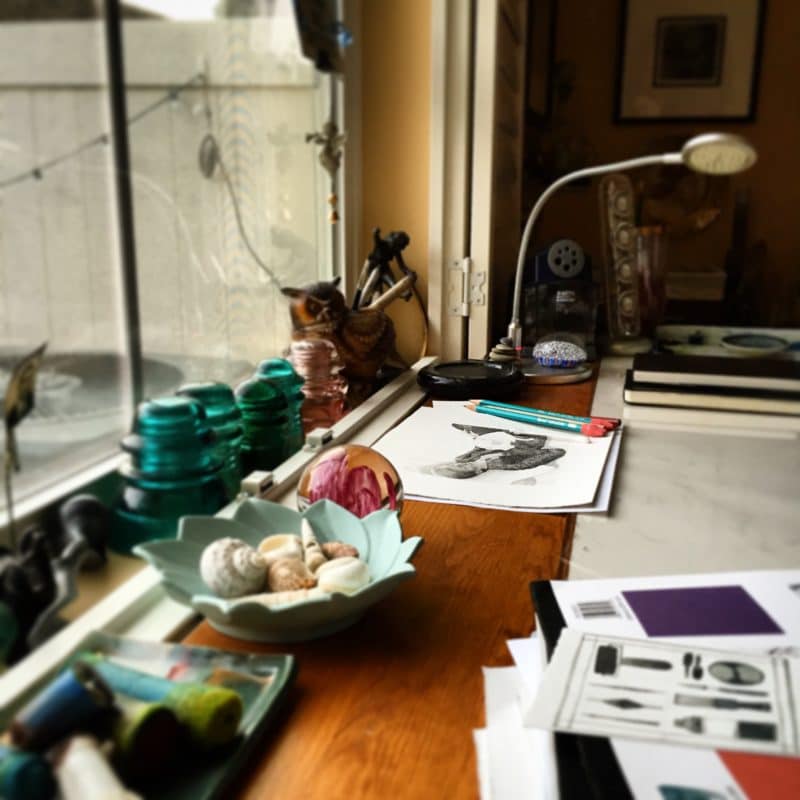
Have Courage with your Art
Here’s the thing I learned about being a beginner at art; sharing your work leads to making more art.
I’m telling the truth here, so keep an open mind. Discussion with other artists is a salad of encouragement, discovery and community. Step up to that table of creative sustenance.
Join an art club, take an online workshop, read a book, attend art openings, listen to art lectures, visit an art museum.
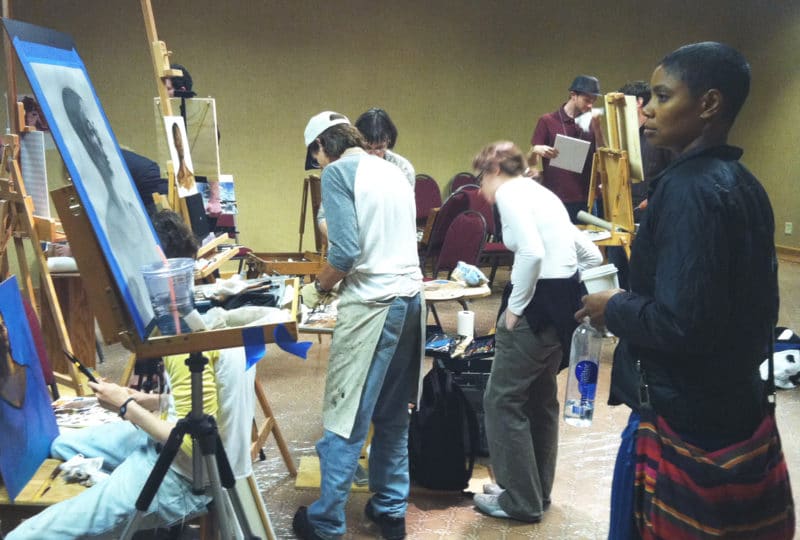
Gather Your Art Friends
Artist tribes help stomp out the judgment gremlin, so we can get back to making stuff.
Speaking to other artists gets thoughts out of our heads, and pipes them into action with art supplies.
Getting those words outside your head – with other artists – works for art-related problem solving too.
Discussion with like-minded creative folks provides perspective, harvests tips and fires the combustion of our creative engines.
And when it comes to problem solving, Talking it Out has been an effective strategy for decades. Find your artist tribe, and mingle often.
Thanks for stopping by to mingle. 🙂 I’ll see you in the next post –
Belinda
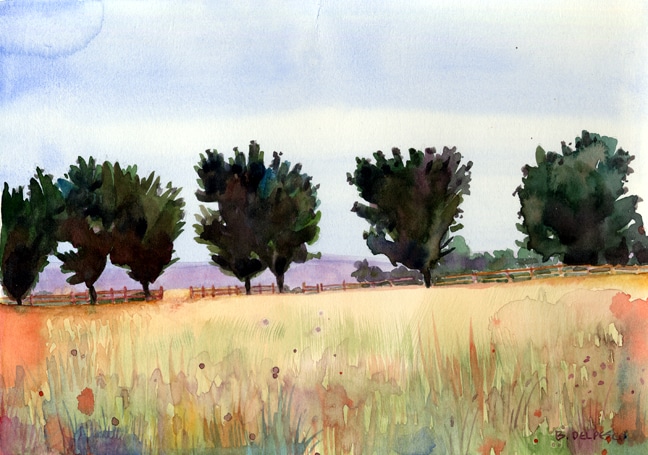
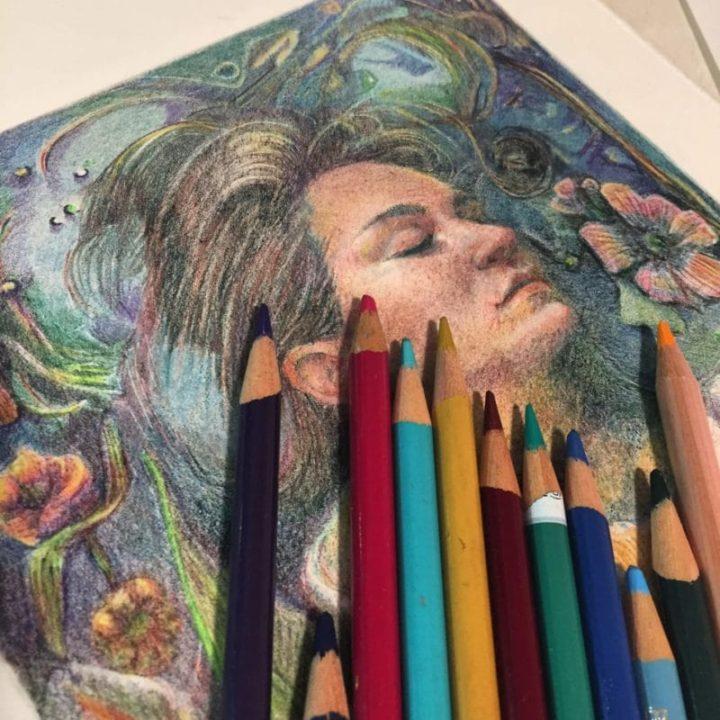
Seven Questions to Help You Roll Past Creative Block
Stagnant creativity feels like a heavy fog pill slipped into your coffee when you weren’t looking. How do you get past Creative Block?
You want to make things. But there’s an invisible sludge haze blocking creative idea generation, inspiration and motivation to get something started. <---Started is the key word.
If you feel like your creativity is blocked, and inspiration eludes you, try this exercise. Sometimes, you just need a hand to hold on the Start part of making art....
Tools
Instructions
- Secure 30 minutes, a pen, a note pad, and some quiet time. Sit in a favorite chair, in a sunny spot in a quiet corner. If home is too chaotic, go to a coffee shop and sit in a sunshiny spot. In either case, if it helps, use earbuds or headphones, and listen to instrumental (no words) music. Fill in the blanks below…
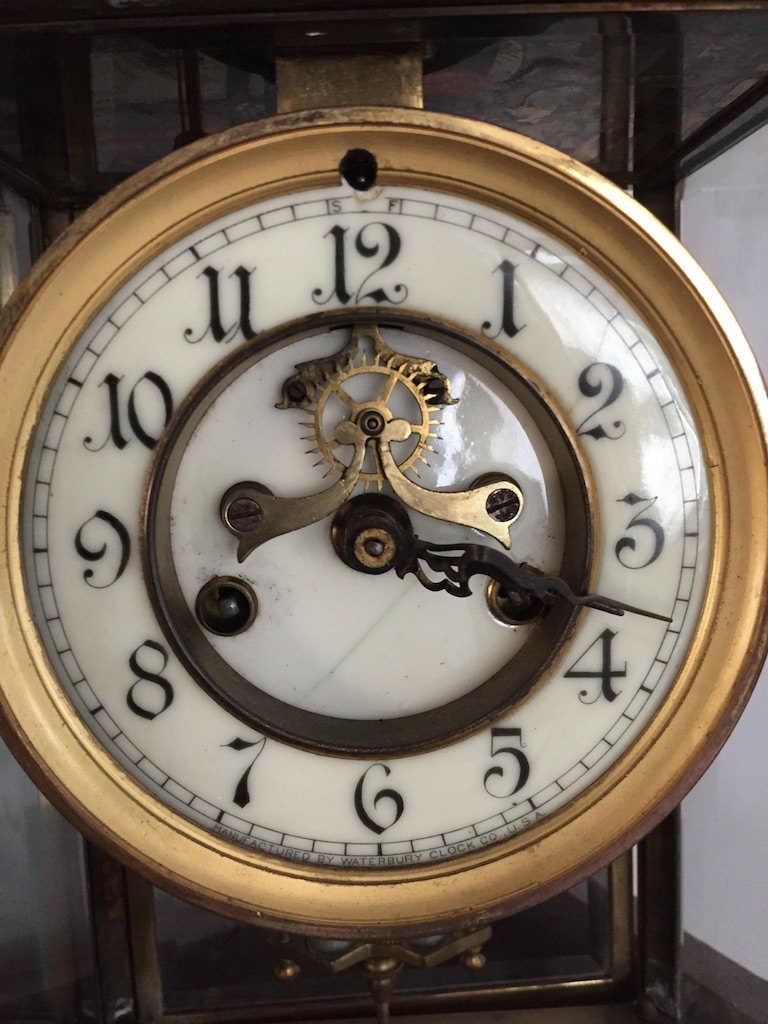
- If I were the King/Queen of the world, and I could sweep a magic wand to clear time and space to create a beautiful piece of art, I’d work in (fill in your medium: oil, acrylic, pastel, watercolor, pen and ink, colored pencil, graphite)._____________________________.
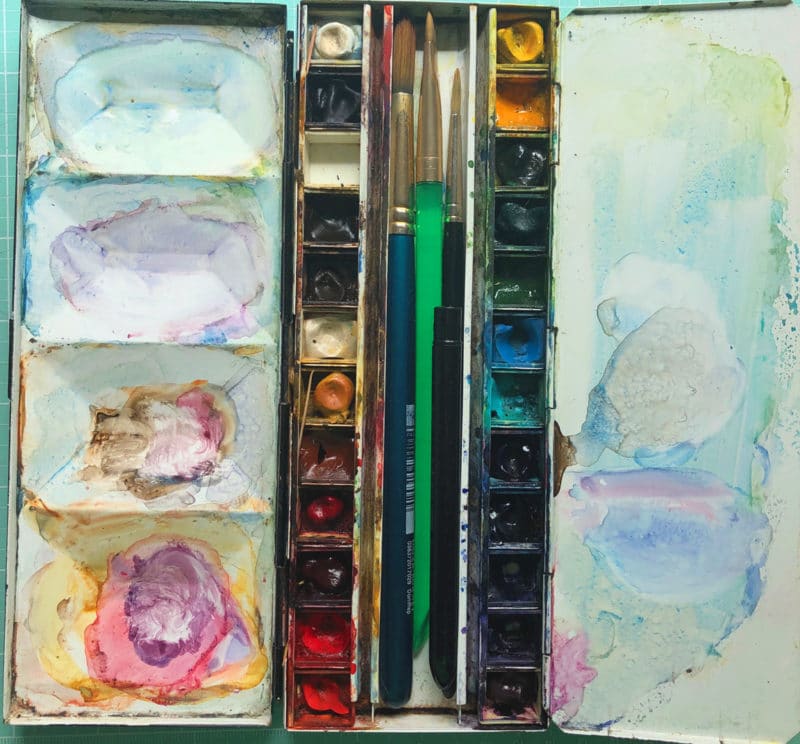
- I could make something abstract, or impressionistic, or representational – and since I have a magic skill wand, I think I’ll choose _________________________________.

- Since I’m in charge, when I think about size and format, I’d like to make something (small, medium large, huge)__________________________, and in a (horizontal, vertical, square)___________________________ format.
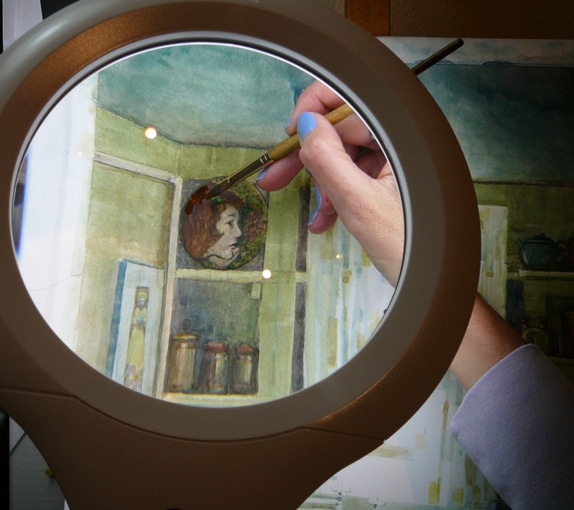
- I’ve got a hankering to work on (paper, yupo, aquabord, canvas, panel, gesso’d paper)_____________________________________.
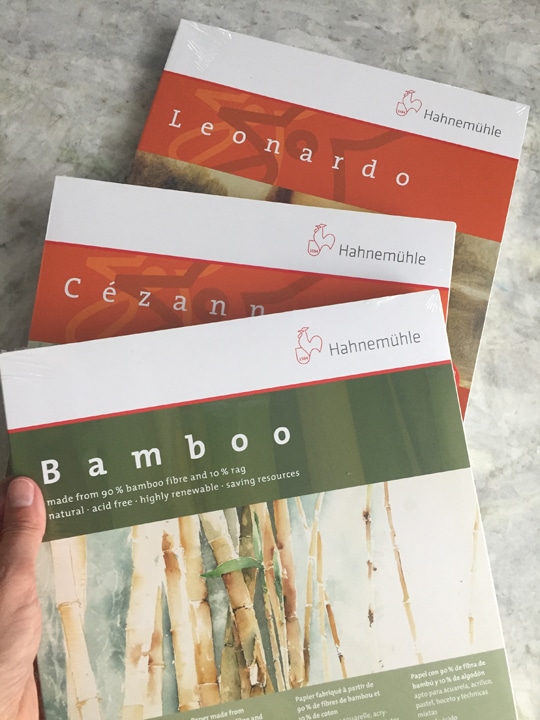
- I’m imagining colors that appeal to me right now, in this season of my life, so I’ll focus on a prominence of these three colors, with supporting hues around them: ______________________________________________________.
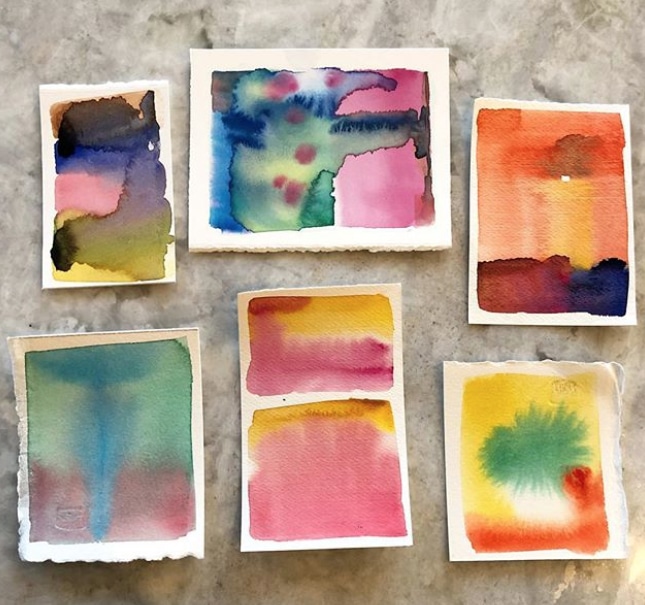
- I know I can choose any subject that appeals to me, like figurative, portrait, still life, landscape, city scene, interiors, sky/cloudscapes, animals, ocean/shorelines and genre scenes. So, right this second, I feel like painting a __________________________________, with elements of __________________ and ____________________ included.
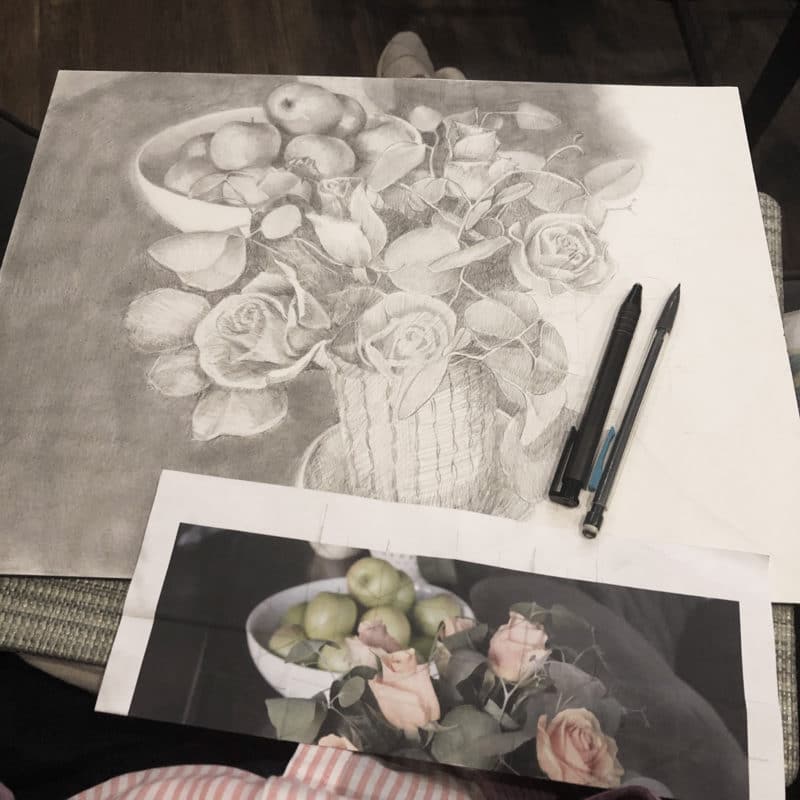
- Now, flip open to a fresh page on your notepad, and stomp on that creative block by doodling some layouts, angles, and compositions (no details, see below) that might fill the format of your paper or canvas.
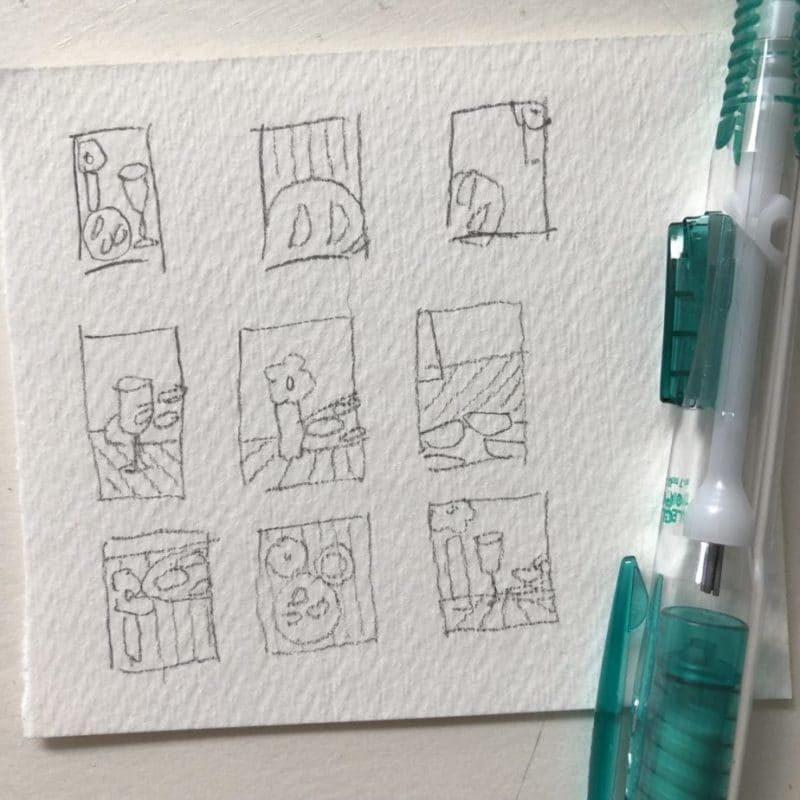
Notes
Feel free to print this, and alter the questions or add new ones that fit your style. Think about times when your art-making was more active, and jot down elements from that time (positive, encouraging) that you can visualize and pre-plan to help you get past the hump of stuckness.
You aren't alone in this. Every artist in history has felt creative block at one time or another, so we are all rooting for you. Set some time aside, and slay it. You've got this.

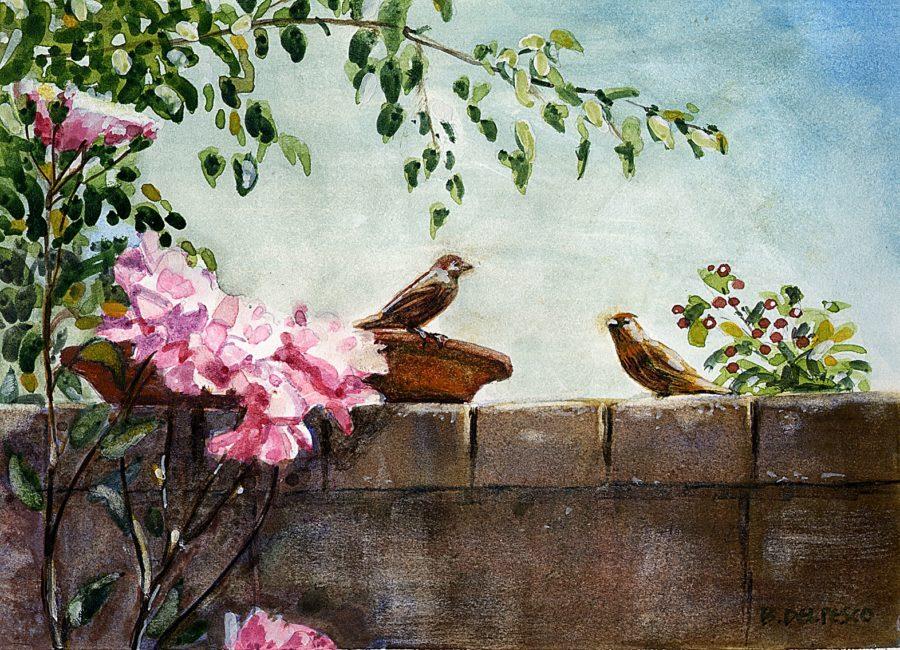
Hi Silvia, we probably both have quite a varied stash of art supplies…an experimenter’s treasure trove. I have used Yupo paper – as a monotype printmaking plate, and as a surface for watercolor. It’s such a different animal for water media, but it’s also much more flexible- since you can literally wipe away mistakes. I don’t have any video tutorials, but I’d recommend dvd instructional vids by the late, great George James, produced by the folks at Creative Catalyst Productions.
Hi Belinda,
I am just now reading your reply to my to my question about Yupo from last October🤪. Thank you for responding. I watched the George James vids that you recommended. Unfortunately, I am now very deep into cold wax. I am loving the process but it is still quite a challenge for me.
Hi Silvia, I’m glad you’re “very deep into” your art. Any art is good, and I hope you’re having a grand time learning, experimenting, and adjusting your process to get exactly the results you’re aiming for!
No garden painting today. It is a cold, dreary and wet this week and was uplifted by your wonderful post. Thank you for taking the time. In the past I’ve done watercolor painting and printmaking so have enjoyed your use of unusual materials. I love all types of materials and mediums.and was wondering if you ever work on Yupo? I’ve used charcoal and watercolor but never get very far. Would love to see your way of working with it.
What a wonderful post, Belinda! Thank you for sharing your thoughts and your beautiful artwork!
Hello Naomi – Thanks so much for your feedback, and your compliments. I hope your art-making flourishes this summer!
Just when I think watercolor is so formless – you show us your property line trees – awesome. Great shapes. Dramatic! Thank you also for the idea of sketching in batches for later painting, and your bountiful thumbnail compositions. Inspiring to have so many views of the same subject, especially since our travels are limited now.
Hah Hah hah… Thank you Ellen! I hope the habit of “pre-drawing” your watercolor sticks, and you find yourself ready to paint with 15 options, waiting for pigments! Grid Drawing is such a perfect way to wind down in the evenings. I’m hooked, and I hope you join me in that habit.
I sign up to all sorts of blogs and then don’t feel inspired to read them. Yours is different. I love reading your words and learning from you . I think Caron is right, you speak like a friend, an extremely talented one and of course your paintings are so beautiful. Thank you 😊
Good morning, Sue – Thank you for reaching out, and sending this basket of warm muffins to start the day. Your words are very kind, and so encouraging to keep sharing, continue writing, and experimenting in the studio, because despite the solo time, we are a collective. I am grateful for our connection. XO
Your words and ideas are uplifting. Love your watercolor paintings.
Hi Elizabeth, Thanks so much for your feedback. I’m glad my ramblings resonate with you. I’m (most of the time) talking to myself in these missives. Kindred spirits, we artists. 🙂
What a great idea for a post!! I love how you broke down the definition and added images. This is very encouraging and makes me excited to expand in some new directions, just for fun and practice. I also love that you are so diversified in the printmaking and the watercolors. Thank you!!!
Hi Teri, Thanks for your encouragement! I’m glad the definition examination prompted a few ideas, and I hope you have a bushel of fun bringing them to fruition! Happy art-making to you!
It would be wonderful to learn from you as we paint out in the garden together! I have been following you for a few years now and so enjoy your posts. I love the way you use colour and light. Your tips and personal stories are wonderful, so honest and from the heart. I feel that you are a good friend and finding a “Belinda” post in my in-box always makes me smile. You are an amazing artist, so generous and inspirational! Thank you, Caron
Awe, Caron, What a wonderful note. You’re so kind! Thanks for following along, and sending encouraging vibes. I’m glad to know our sensibilities are matched, and we like similar stories and moods. I hope you find useful tidbits here and there in these posts, and your art adventures are flourishing. All the best to you.